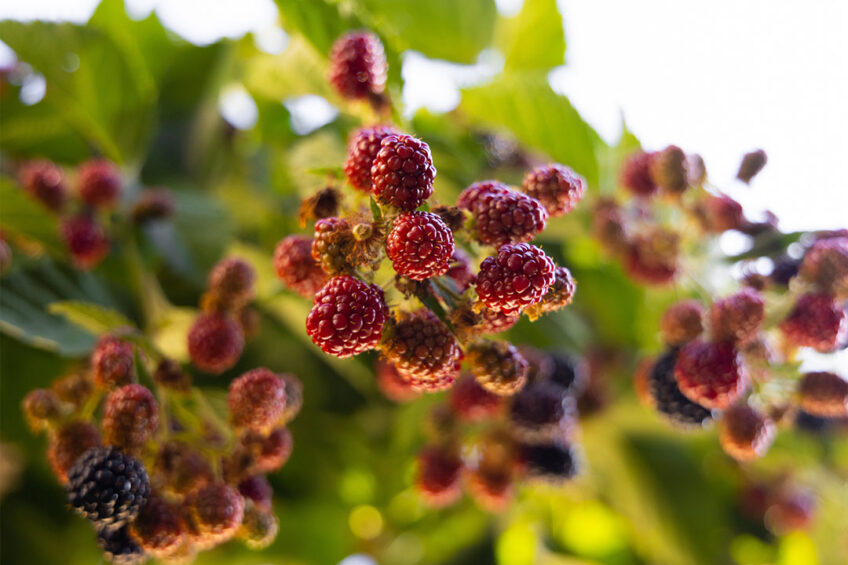Mulberry and paper mulberry silages improve pork quality

Researchers from China investigated the effects of mulberry and paper mulberry silages on the growth performance, pork quality, and gut health of finishers.
Mulberry and paper mulberry are green and healthy feed additives with a relatively high protein content, as well as essential amino acid, fat, and fiber contents. In addition, mulberry and paper mulberry leaves have good palatability, high digestibility, and antioxidant and antibacterial activities. Mulberry and paper mulberry can be made into silage feed for pigs, thus reducing nutrient loss during harvest. They also improve storage to the maximum extent, and increase the efficiency of feed treatment.
Data collection
The research team randomly divided 240 healthy finishing pigs into control, mulberry silage, and paper mulberry silage groups. The experiment lasted for 61 days, including a 7-day pre-experiment period and a 54-day feeding experiment. After the feeding experiment, they randomly selected 4 finishing pigs per treatment group for slaughter. Average daily feed intake, average daily gain, and feed conversion ratio were measured to evaluate the growth performance of finishing pigs.
The researchers collectd approximately 500 grams of longissimus dorsi muscle. They also measured marbling, drip loss, water holding capacity and meat colour, including redness, yellowness, and lightness. In addition, they measured fatty acids in 100-g samples of longissimus dorsi muscle and short-chain fatty acids in the colon, using gas chromatography. Samples of cecum and colon chyme were collected for sequencing bacterial DNA and measuring DNA concentration and purity. Richness, diversity, and composition of gut microbiota in different treatment groups were analysed as well.
Impact of silages on growth performance
The mulberry and paper mulberry silage did not impact the average daily gain and feed conversion ratio of finishing pigs.
Both mulberry and paper mulberry silages improved marbling scores and intramuscular fat deposition thus improving the tenderness and the edible quality of pork
Impact of mulberry silages on pork quality
The overall acceptability of meat colour, appearance, marbling score, and fresh meat sensory score of pigs fed silage was higher than that of commercial feed. The paper mulberry silage increased the lightness of the pork. In addition, the mulberry silage enhanced the pork redness. The paper mulberry silage increased the water holding capacity of pork, which is related to the antioxidant capacity of muscles. Furthermore, both mulberry and paper mulberry silages improved marbling scores and intramuscular fat deposition thus improving the tenderness and the edible quality of pork.
Impact of silages on pork fatty acids
The mulberry silage decreased oleic acid, monounsaturated fatty acid, myristic acid, stearic acid, and saturated fatty acid. On the other hand, mulberry silage increased α-linolenic acid, omega-3 fatty acid, polyunsaturated fatty acid, and omega-6 fatty acid. In addition, both mulberry and paper mulberry silages enhanced arachidonic acid, thus improving the immune function and decreasing the risk of inflammation. The results suggested that the mulberry silage diet improved the nutritional value of pork by affecting the fatty acid composition.
Impacts on short-chain fatty acids in the colon
Both mulberry and paper mulberry silages increased the concentrations of acetic acid, propionic acid, and total short-chain fatty acids in the colon. The mulberry silage increased the butyric acid content of the colon which is the main energy source for metabolism of hindgut cells.
Diversity, richness, and composition of gut microbiota
Mulberry and paper mulberry silages increased the diversity and richness of cecum microbes. Cecum microbiota was mainly composed of Firmicutes, Bacteroidetes, Actinobacteria, Proteobacteria, Verrucomicrobia, and Spirochaetae. The abundance of Proteobacteria which promotes the production of lactic acid was higher in both silage groups. The colon microbiota comprised of Firmicutes, Bacteroidetes, Spirochaetae, Actinobacteria, and Proteobacteria. However, both mulberry and paper mulberry silages decreased the relative abundance of Lactobacillus. The paper mulberry silage increased the relative abundance of Christensenellaceae which is essential to the structure and function of the host gut tract.
The authors concluded that this study provided a theoretical basis for the application of mulberry silage in finishing pigs to improve pork quality.
The article in the Journal of Microbial Spectrum was authored by Jiakuan Niu, Xiao Liu, Junying Xu, Fen Li, Jincan Wang, Xixi Zhang, Xu Yang, and Lin Wang from the College of Animal Science and Technology, Hunan Agricultural University, China, and Sen Ma, Defeng Li, Xiaoyan Zhu, Chengzhang Wang, Yinghua Shi, and Yalei Cui from the College of Animal Science and Technology, Hunan Agricultural University, Hunan Key Laboratory of Innovation and Utilization of Grassland Resources, and Henan Forage Engineering Technology Research Center, China.











